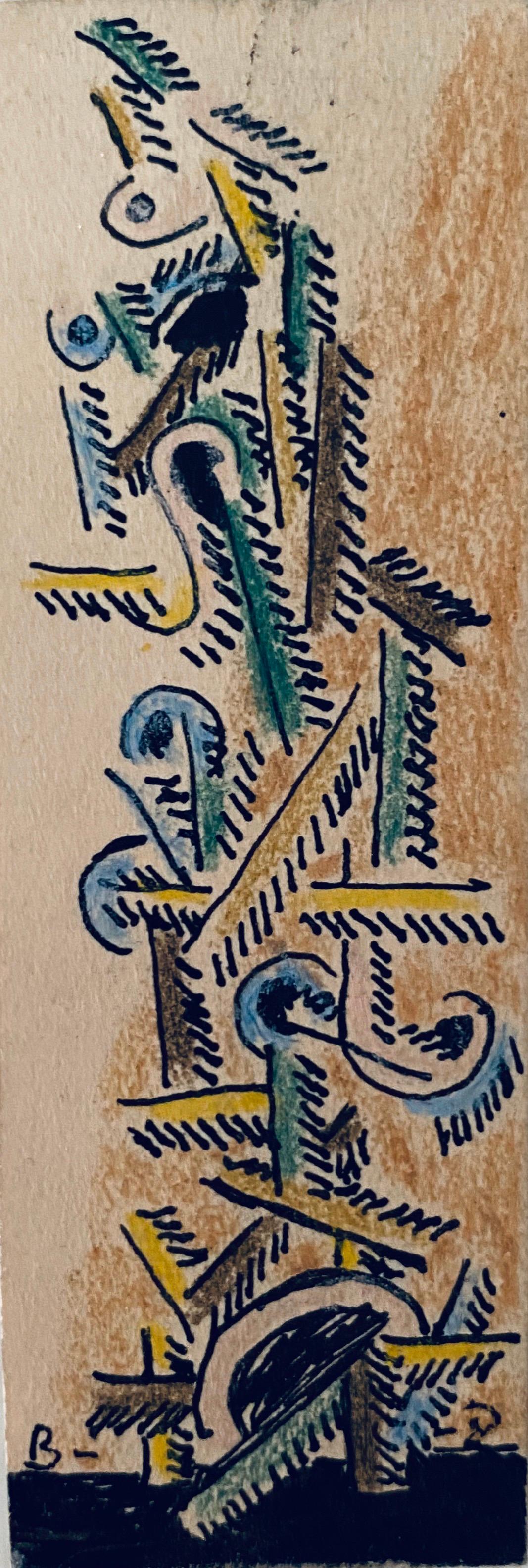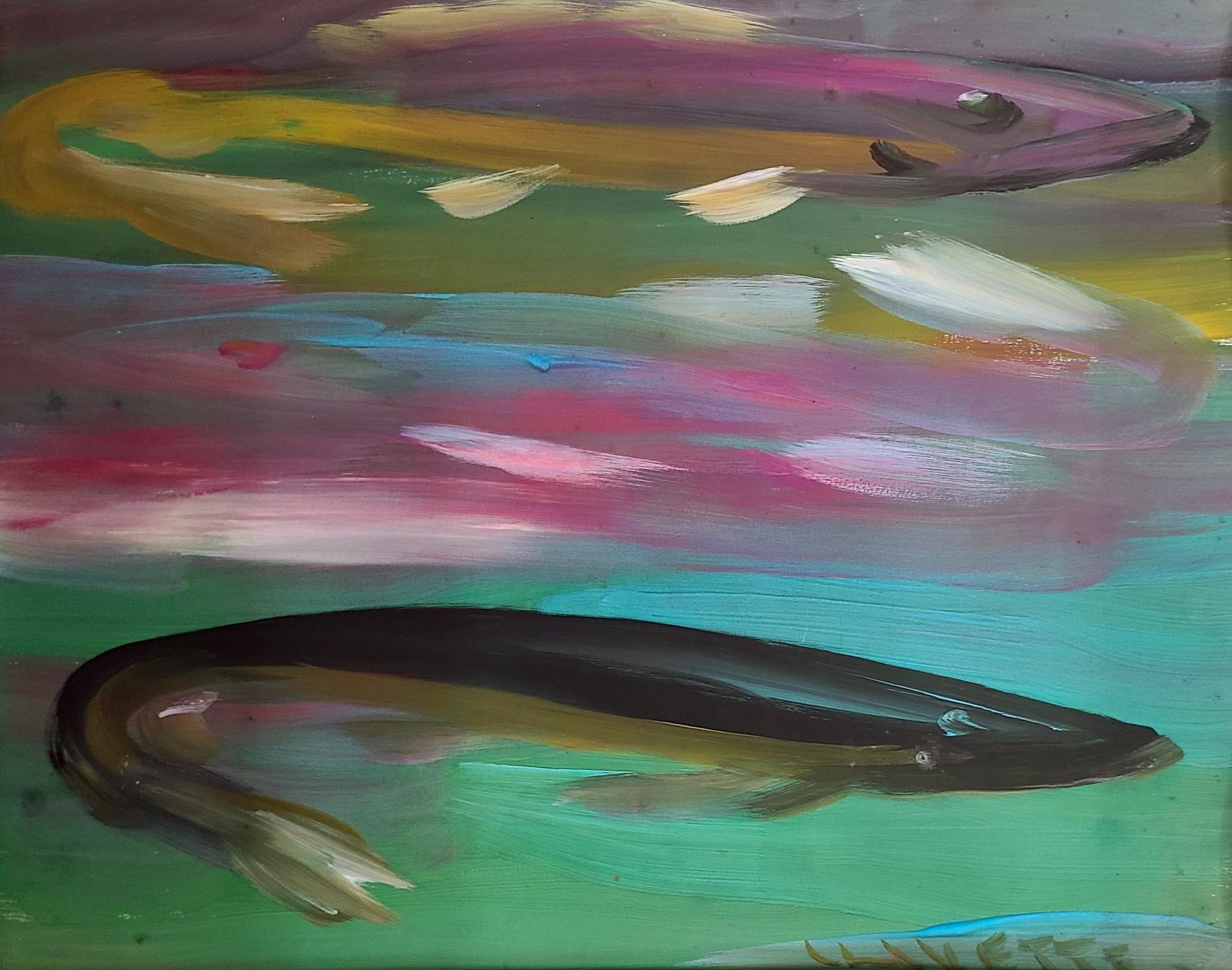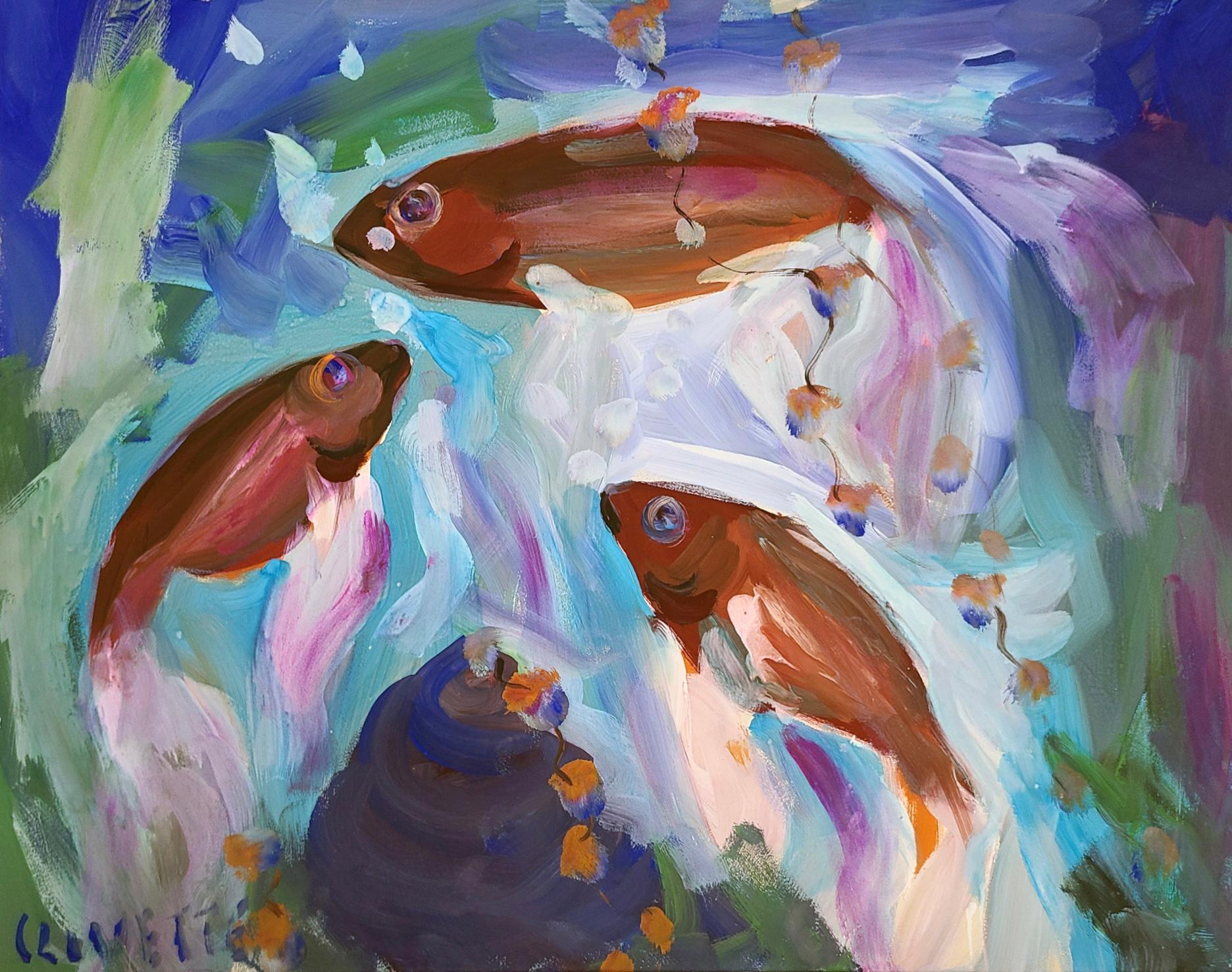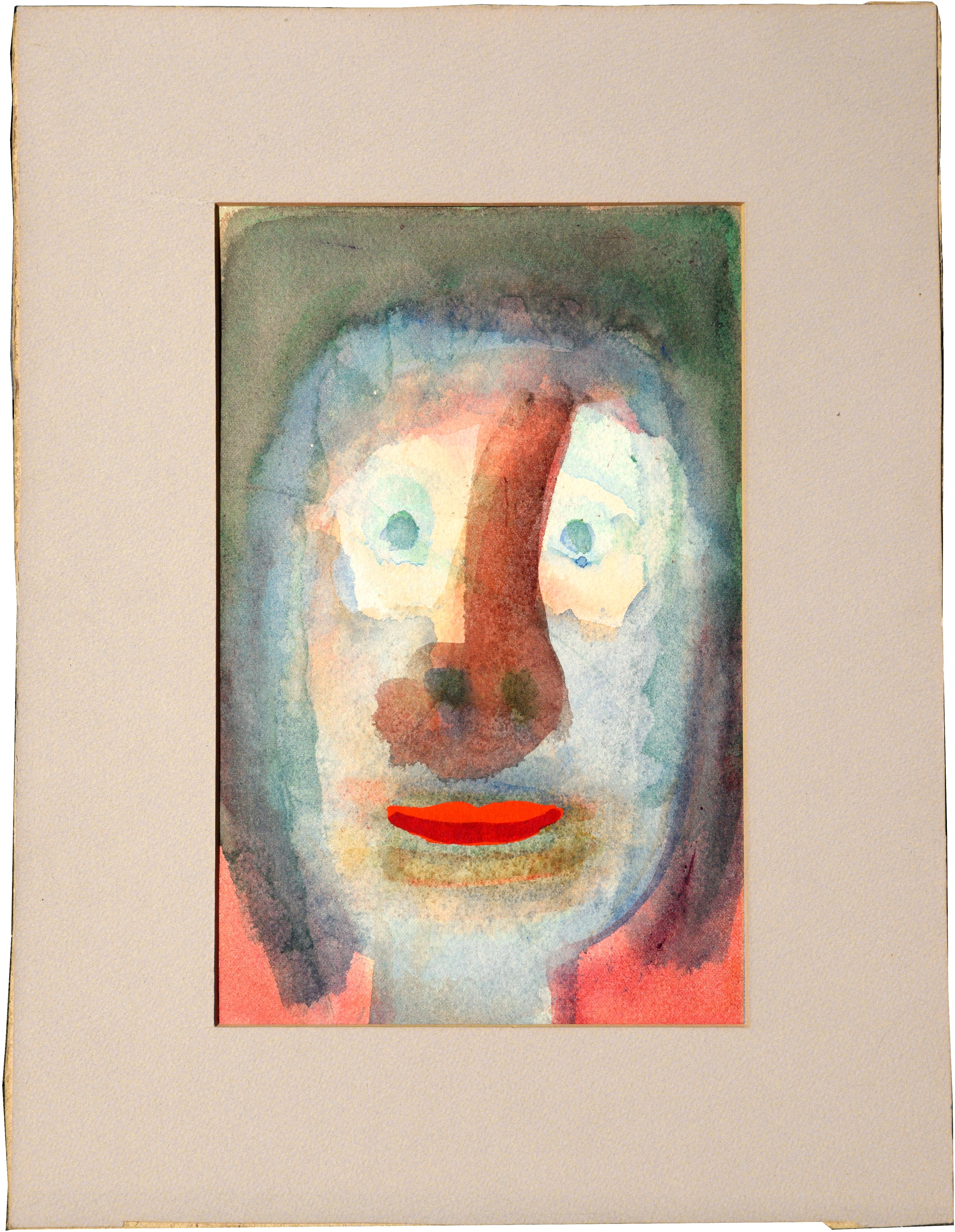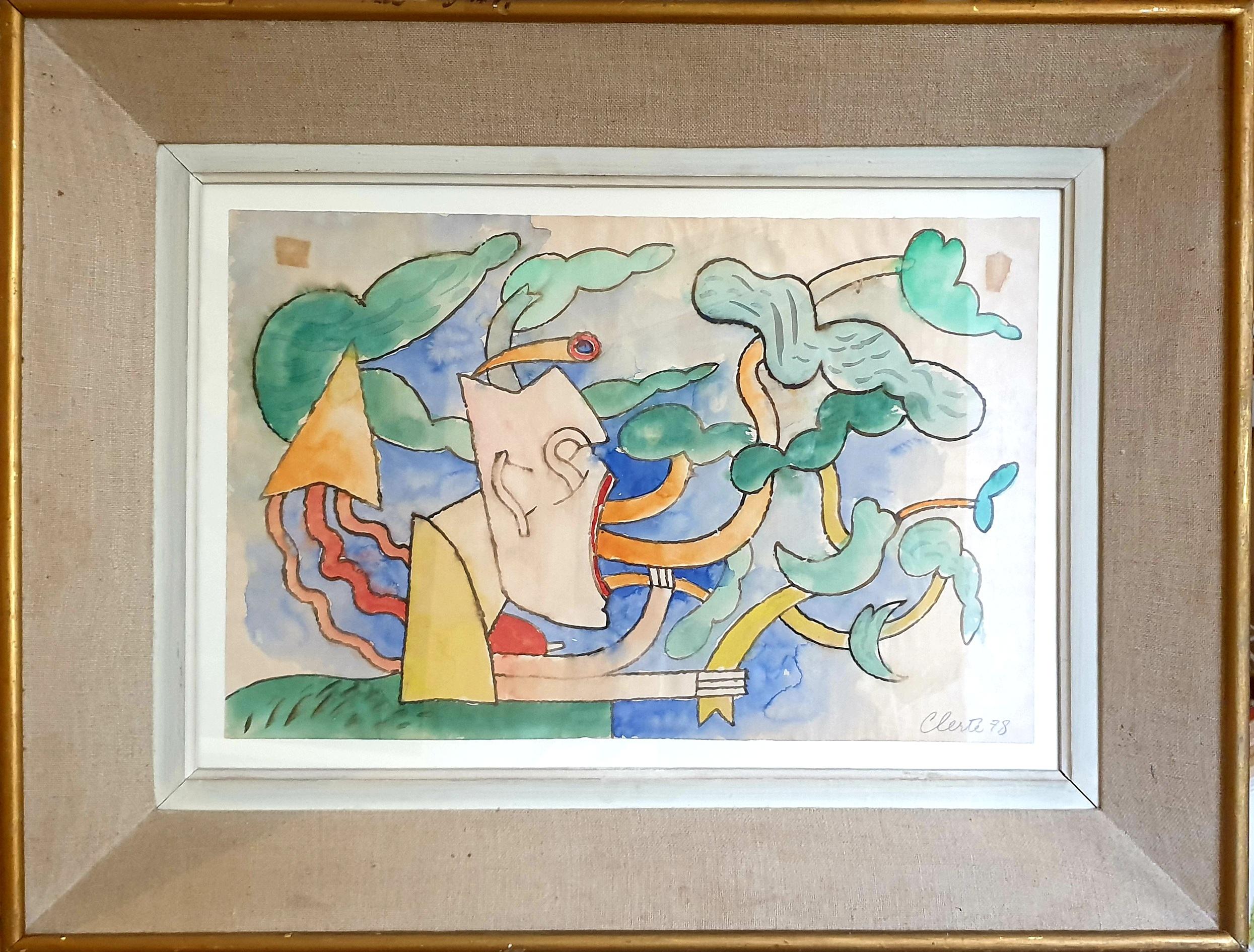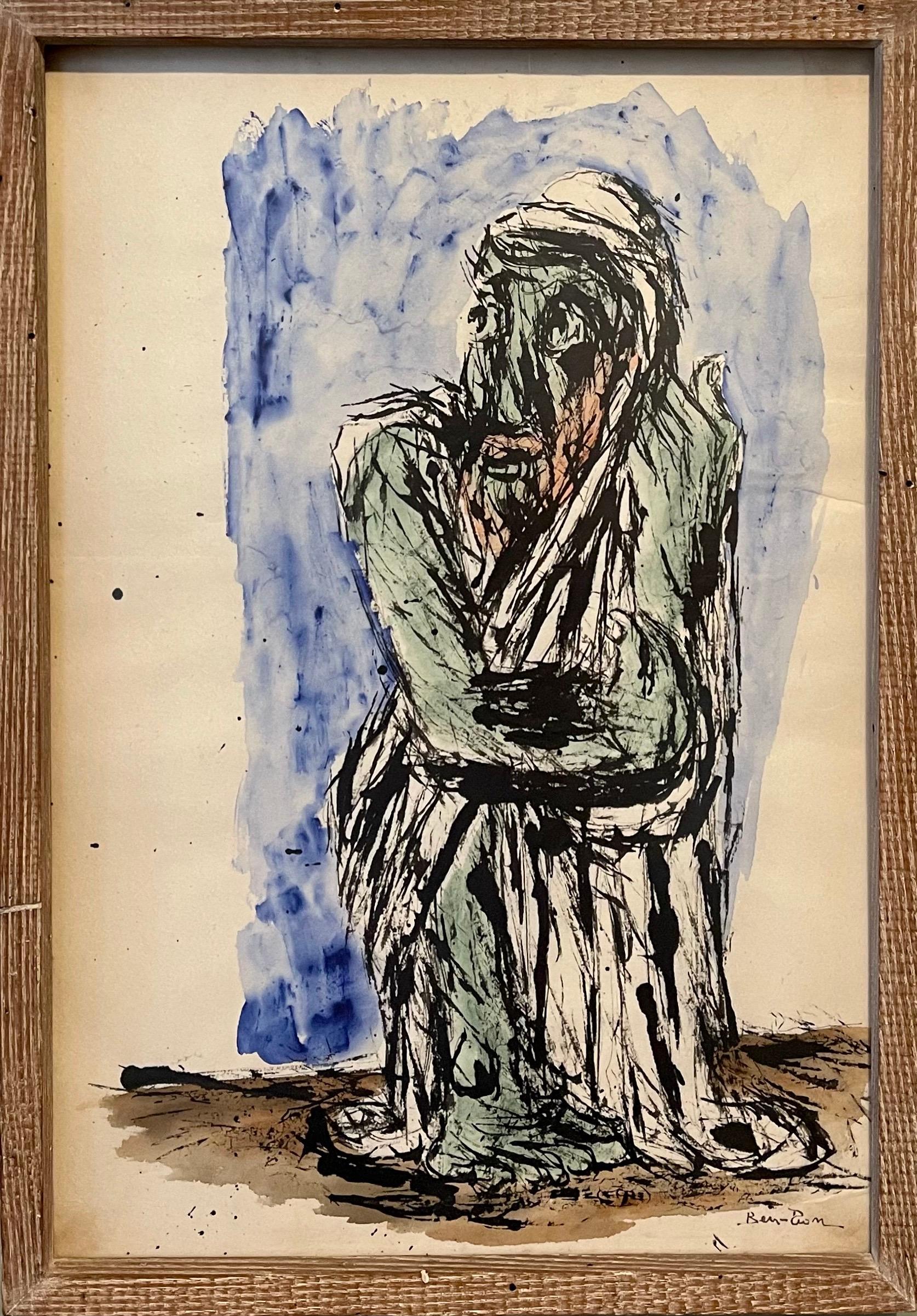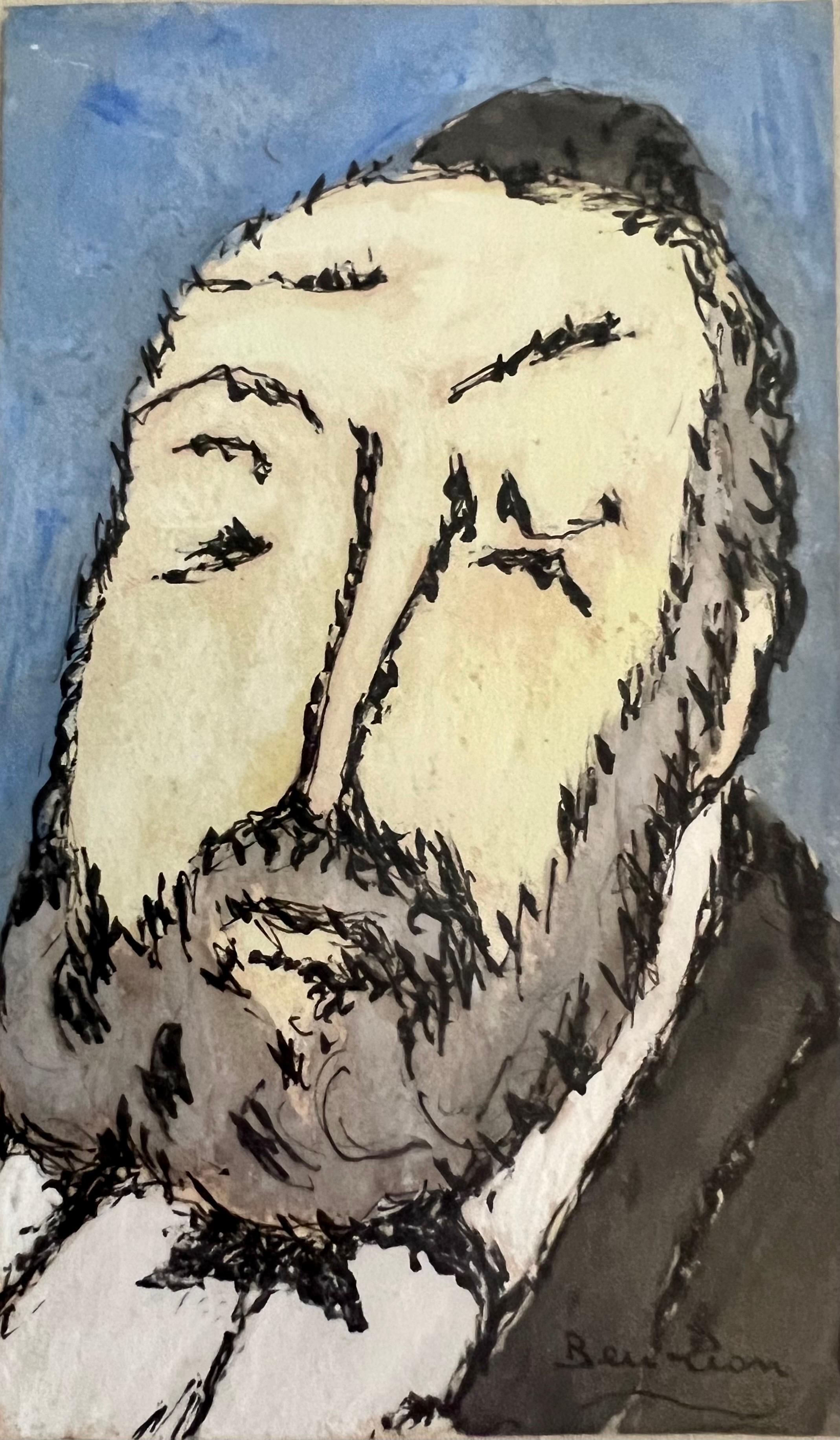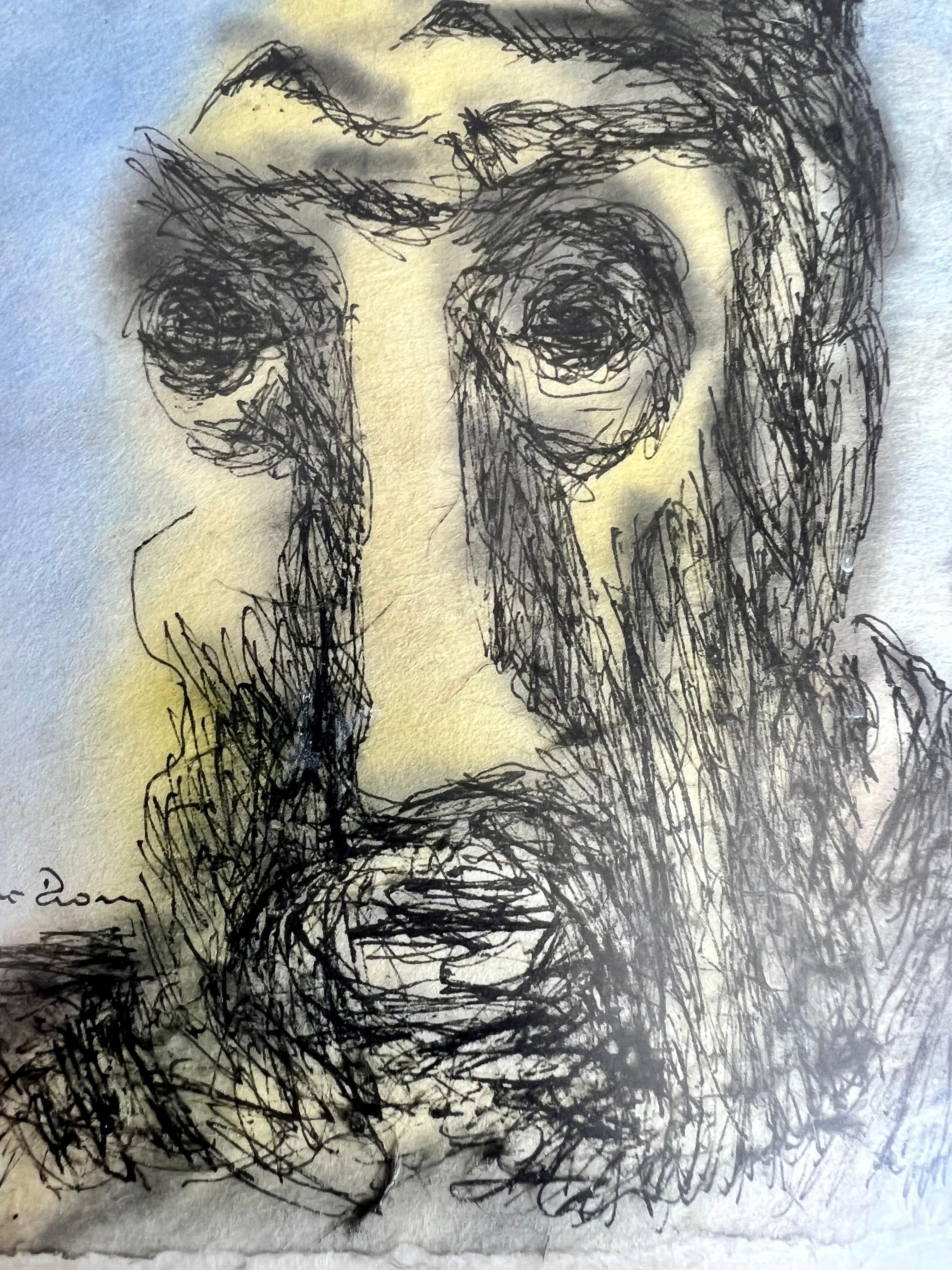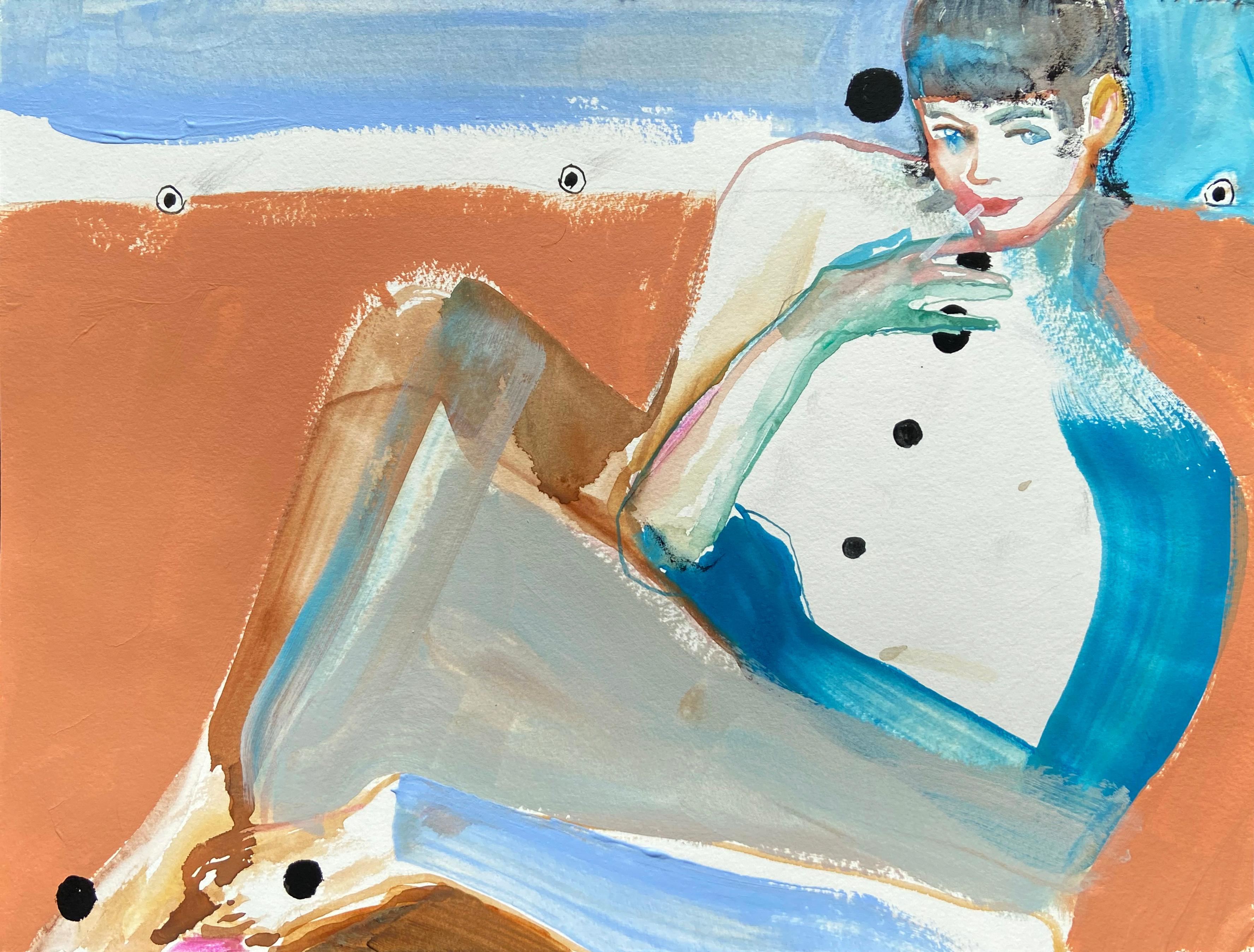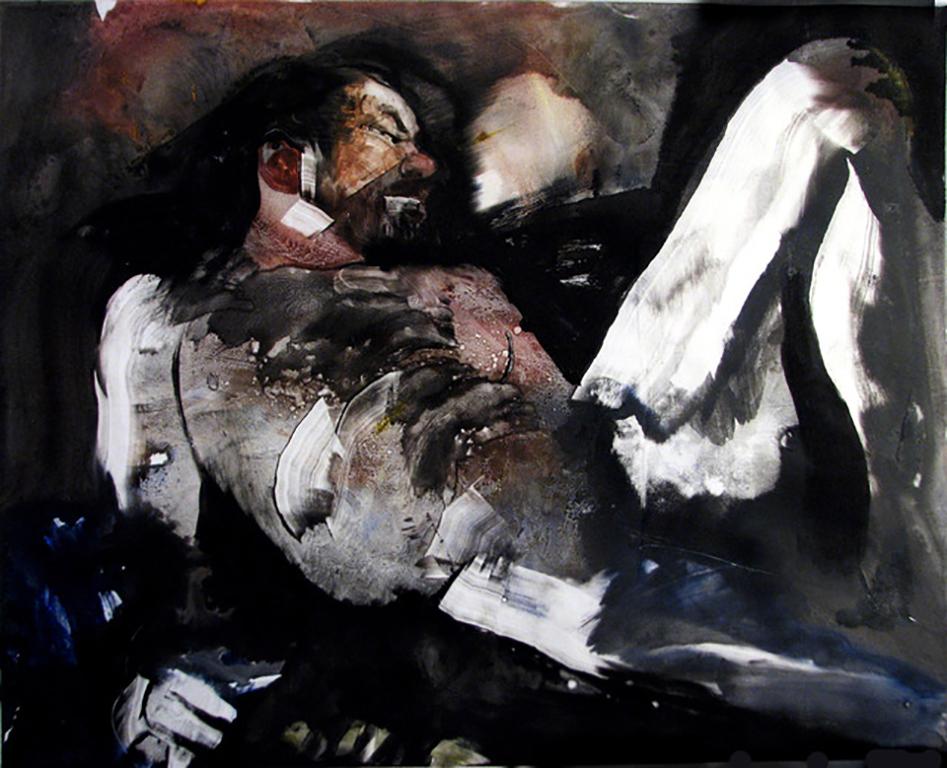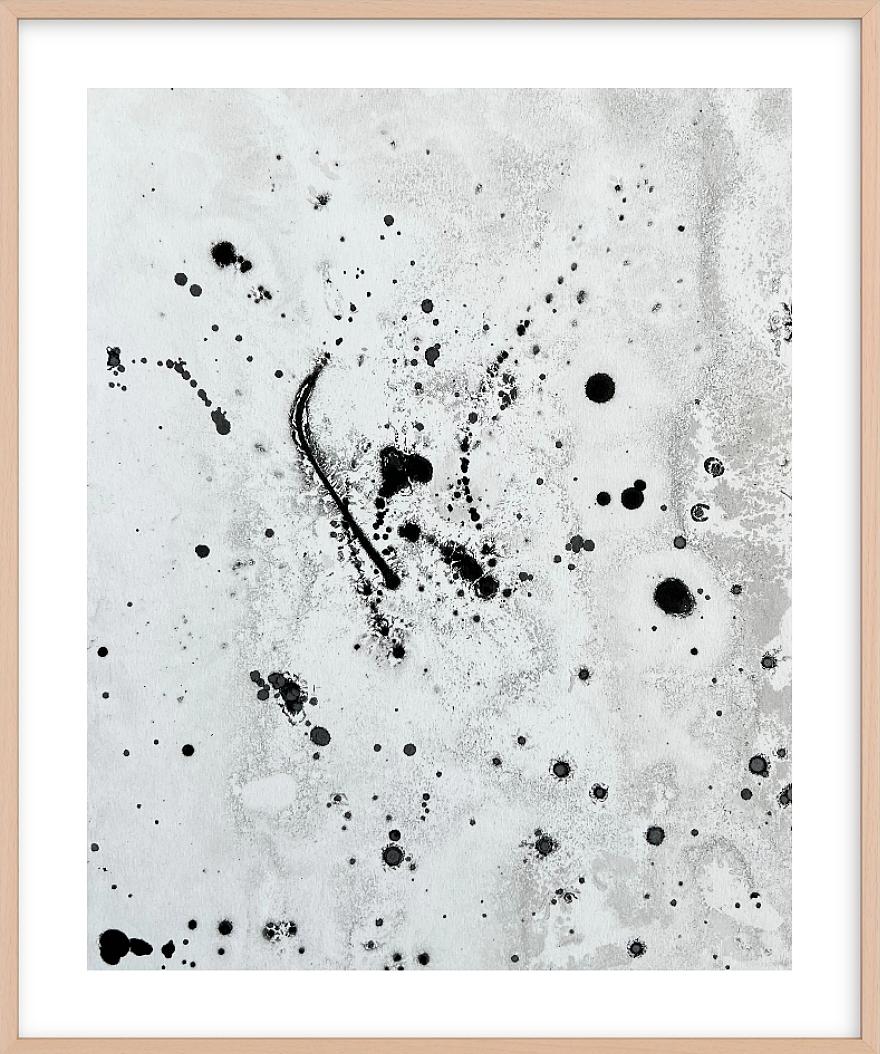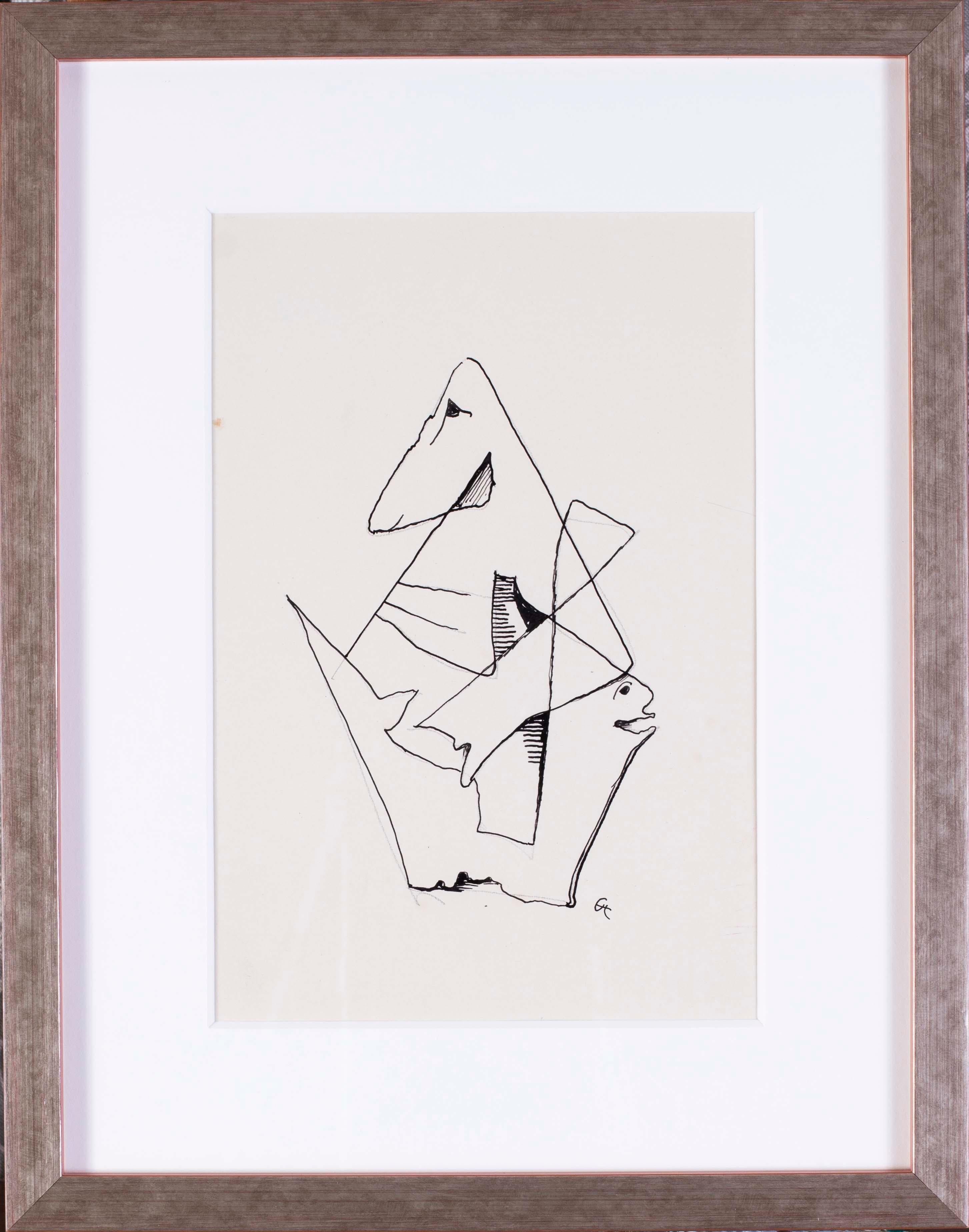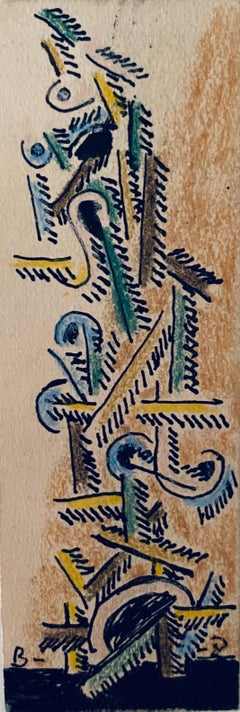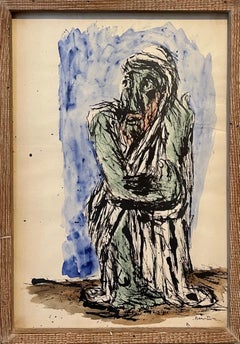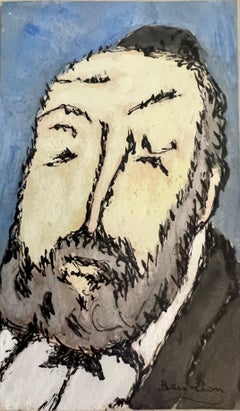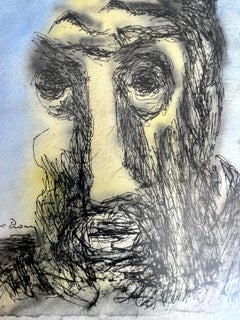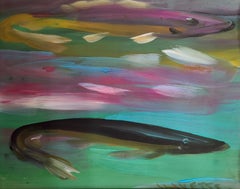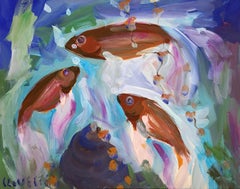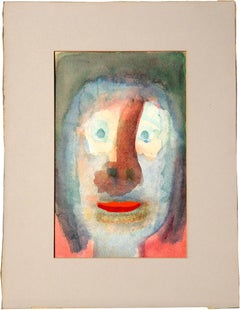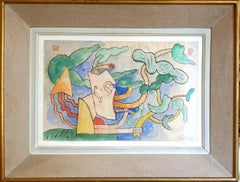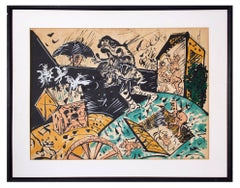
Untitled. Figures in a Landscape
View Similar Items
Want more images or videos?
Request additional images or videos from the seller
1 of 6
George ChemecheUntitled. Figures in a Landscape1971
1971
Price:$720
$1,200List Price
About the Item
- Creator:George Chemeche (1934, American, Iraqi)
- Creation Year:1971
- Dimensions:Height: 24.75 in (62.87 cm)Width: 31 in (78.74 cm)
- Medium:
- Movement & Style:
- Period:
- Condition:there are some water spotting to the paper possibly original to the piece and technique. please see photos.
- Gallery Location:Surfside, FL
- Reference Number:1stDibs: LU3822027823
About the Seller
4.9
Platinum Seller
Premium sellers with a 4.7+ rating and 24-hour response times
Established in 1995
1stDibs seller since 2014
1,787 sales on 1stDibs
Authenticity Guarantee
In the unlikely event there’s an issue with an item’s authenticity, contact us within 1 year for a full refund. DetailsMoney-Back Guarantee
If your item is not as described, is damaged in transit, or does not arrive, contact us within 7 days for a full refund. Details24-Hour Cancellation
You have a 24-hour grace period in which to reconsider your purchase, with no questions asked.Vetted Professional Sellers
Our world-class sellers must adhere to strict standards for service and quality, maintaining the integrity of our listings.Price-Match Guarantee
If you find that a seller listed the same item for a lower price elsewhere, we’ll match it.Trusted Global Delivery
Our best-in-class carrier network provides specialized shipping options worldwide, including custom delivery.More From This Seller
View AllAbstract Drawing Watercolor Painting Totem Column Jewish American Modernist WPA
By Ben-Zion Weinman
Located in Surfside, FL
Miniature Abstract Totem. Signed with initials.
Provenance: Virginia Field, Arts administrator; New York, N.Y. Assistant director for Asia House gallery. (she was friends with John v...
Category
Mid-20th Century Expressionist Abstract Drawings and Watercolors
Materials
Ink, Watercolor
Abstract Expressionist Rabbi Watercolor Painting Jewish American Modernist WPA
By Ben-Zion Weinman
Located in Surfside, FL
Watercolor painting of standing prophet or Rabbi, Judaica artwork
Born in 1897, Ben-Zion Weinman celebrated his European Jewish heritage in his visual works as a sculptor, painter, ...
Category
Mid-20th Century Expressionist Abstract Drawings and Watercolors
Materials
Paper, Watercolor
Ben ZIon Expressionist Judaica Rabbi Watercolor Painting Jewish Modernist WPA
By Ben-Zion Weinman
Located in Surfside, FL
Frame measures 13.5 X 11.5
Paper measures 6.5 X 4 inches
Hand signed lower right
Watercolor painting of prophet or Rabbi, Judaica artwork
Born in 1897, Ben-Zion Weinman celebrated h...
Category
Mid-20th Century Expressionist Abstract Drawings and Watercolors
Materials
Paper, Watercolor
Ben ZIon Expressionist Judaica Rabbi Watercolor Painting Jewish Modernist WPA
By Ben-Zion Weinman
Located in Surfside, FL
Frame measures 13.5 X 11.5
Paper measures 6.5 X 5 inches
Hand signed lower right
Watercolor painting of prophet or Rabbi, Judaica artwork
Born in 1897, Ben-Zion Weinman celebrated h...
Category
Mid-20th Century Expressionist Abstract Drawings and Watercolors
Materials
Paper, Watercolor
Collage Watercolor Painting David Gilhooly California Funk Surrealism MixedMedia
By David Gilhooly
Located in Surfside, FL
DAVID JAMES GILHOOLY (American, 1943-2013),
Mixed media collage
6 x 4 inches,
Hand signed and dated verso
Napoleon from the back, holding a heart.
cut and pasted cardstock assemblage, collaged art.
David Gilhooly RCA (1943 – 2013), was an American ceramicist, sculptor, painter, printmaker, and professor. He is best known for pioneering the Funk art movement. He made a series of ceramic frogs called FrogWorld, as well as ceramic food, planets, and other creatures.
David James Gilhooly III was born on April 15, 1943, in Auburn, California. He was raised in Los Altos, California; Saint Croix in the Virgin Islands; and Humacao, Puerto Rico.
He enrolled in University of California, Davis (UC Davis) initially studying biology, followed by anthropology, and ending with a focus on fine art. While attending UC Davis, Gilhooly served as artist Robert Arneson assistant starting in 1963. He graduated from UC Davis with a BA degree in 1965, and an MA degree in 1967.
Gilhooly, together with Robert Arneson, Peter Vandenberge, Chris Unterseher, and Margaret Dodd, working together in TB-9 (temporary building 9) were what was later to be called, The Funk Ceramic...
Category
2010s Surrealist Mixed Media
Materials
Paper, Ink, Watercolor
Collage Watercolor Painting David Gilhooly California Funk Surrealism MixedMedia
By David Gilhooly
Located in Surfside, FL
DAVID JAMES GILHOOLY (American, 1943-2013),
Mixed media collage
6 x 4 inches,
Hand signed and dated verso
Napoleon from the back, with King Henry VIII holding a pastry.
titled: "England cannot be conquered by a few French pastries"
cut and pasted cardstock assemblage, collaged art.
David Gilhooly RCA (1943 – 2013), was an American ceramicist, sculptor, painter, printmaker, and professor. He is best known for pioneering the Funk art movement. He made a series of ceramic frogs called FrogWorld, as well as ceramic food, planets, and other creatures.
David James Gilhooly III was born on April 15, 1943, in Auburn, California. He was raised in Los Altos, California; Saint Croix in the Virgin Islands; and Humacao, Puerto Rico.
He enrolled in University of California, Davis (UC Davis) initially studying biology, followed by anthropology, and ending with a focus on fine art. While attending UC Davis, Gilhooly served as artist Robert Arneson assistant starting in 1963. He graduated from UC Davis with a BA degree in 1965, and an MA degree in 1967.
Gilhooly, together with Robert Arneson, Peter Vandenberge, Chris Unterseher, and Margaret Dodd, working together in TB-9 (temporary building 9) were what was later to be called, The Funk Ceramic...
Category
2010s Surrealist Mixed Media
Materials
Paper, Ink, Watercolor
You May Also Like
Colorful Fish - Blue Green Pink White Yellow Black
By Merton Clivette
Located in Rancho Santa Fe, CA
Signed lower left.
Provenance: The Estate of the Artist
A letter of authenticity from the Artist's Estate will accompany this work of art.
Category
1920s Expressionist Abstract Drawings and Watercolors
Materials
Gouache, Archival Paper
Three Fish - colorful Blue Green Lavender Purple White Orange
By Merton Clivette
Located in Rancho Santa Fe, CA
Signed lower left.
Provenance: The Estate of the Artist
A letter of authenticity from the Artist's Estate will accompany this work of art.
Category
1920s Expressionist Abstract Drawings and Watercolors
Materials
Gouache, Archival Paper
Abstract Expressionist Watercolor Portrait
By Howard Margolis
Located in Soquel, CA
Abstract expressionist portrait of a colorful face by Berkeley artist Howard Margolis (American, 1927-2015). Unsigned, with “Howard Margolis” on verso. Presented unframed, in a paste...
Category
Late 20th Century Expressionist Portrait Drawings and Watercolors
Materials
Paper, Watercolor
$680 Sale Price
20% Off
'Mother Nature', Lyrical Surrealist Abstract Watercolour on Paper.
Located in Cotignac, FR
Mid-century lyrical surrealist abstract watercolour on paper by French artist Jean Clerté, signed and dated bottom right. Presented in mid-century frame.
Jean Clerté , born in 1930 in Saint-Savin-sur-Gartempe in Vienne, is a French painter, engraver, draftsman, watercolourist and sculptor . This work is a great example of his more humorous and expressive work influenced by Alechinsky from the late 1960s onwards. There is a light playfulness and yet the watercolours are more vivid than his previous palette.
Jean Clerté works in series. His sequential narrations testify both to a youthful spontaneity and to a perfect mastery in the distribution of forms and images on the painted surface. The narration is not only an accumulation of juxtaposed fragments and symbols, it forms a whole, it takes on and gives meaning. In general, we can say of Clerté that he practices an “eco-art” that feeds on primary hungers: the feeling of being united with nature, the vegetable, the mineral, the aquatic. In his colourful canvases, his inks, his boxes, his objects, like a shaman on the path of his dreams, the painter Clerté mounts an assault on beasts and demons, elves and gnomes. From the Poitevin marshes to the tropical forests emerges a fauna caught in the meanders of a design that marvels at the appearance of these grotesque idols.
Jean Clerté began to draw and paint at a very young age, and at the age of 15 he enrolled at the École des Beaux-Arts in Poitiers. Then in 1949, curious about the capital, he moved to Paris. Having very few financial resources, he could not continue his studies at first, worked as a model to survive, and met other artists; he was then admitted to the studio of Ossip Zadkine and, from 1952, he was also able to study engraving at Atelier 17 of Stanley William Hayter, an English engraver and printer living in Paris associated in the 1930s with surrealism.
At the end of the 1960s, he worked alongside Pierre Alechinsky, founding member of the Cobra movement, engraving Alechinsky's originals, benefiting from his advice, and discovering acrylic as a medium.
From 1976, Jean Clerté became associate professor at Hayter. Clerté had taught previously, in 1971 at the Salzburg Summer University and in 1972 he gave courses at the Paris-Sorbonne University . In 1981, he was appointed professor at the School of Decorative Arts , where he had Maïlys Seydoux-Dumas as a student and, from 1983 to 1988, he was Alechinsky's assistant professor at the Paris School of Fine Arts.
His first works are part of the current of lyrical abstraction, and are nourished by impressions of nature (landscape motifs, e.g. forest fires, waterscapes), then around 1968, encouraged by Alechinsky, he rejects abstraction, and his work becomes more figurative with expressive and humorous elements. From this period his colours are more subdued, often with pastel tones, he works on series. Jean Clerté has created a world in a space where drawing, painting, objects participate in a playful figuration. From his drawings were born sculptures and sometimes mobiles (Le Moulin à dessin). If it is the artist who makes astonishing, polychrome, whimsical “toys”, it is the painter who appeals to adults through his caustic and satirical humour.
His first exhibitions in France took place at the Galerie Massol , then at the Galerie Pascal...
Category
Mid-20th Century Expressionist Figurative Drawings and Watercolors
Materials
Paper, Watercolor
portrait drawinggirl Maxime
Located in IT
artist:
Anastasia Aureum
unique piece
one of a kind
watercolour tempera on paper
hand signed
The artist recalls that at an early age she loved to spend hours and hours leafing thr...
Category
21st Century and Contemporary Expressionist Drawings and Watercolor Pain...
Materials
Paper, Tempera, Watercolor
$931 Sale Price
73% Off
Prize Blade 1, abstract male nude, expressionist brushwork, dark, monochromatic
By Tom Bennett
Located in Brooklyn, NY
Monotype
Dramatic imagery from Tom Bennett’s series of monotypes, blending surrealistic mindscapes with stark realism
About Tom Bennett:
With quick brushstrokes, Tom Bennett creates representational images of human figures and animals, emphasizing movement in a manner reminiscent of Lucien Freud, Edgar Degas and the photographer Eadweard Muybridge. Elongated and blurry, the horse racing up a hill (Canter Fritz, 2002) and the sinister cat landing a leap (Chien Blanc, 1998) elicit a sense of foreboding enhanced by Bennett’s somber palette; his female figures too reflect a grim sense of humor with their distorted nude bodies. The face of Untitled Figure (1997), for example, is obscured by layers of dark paint. Classically trained as a painter, he initially worked in oil on canvas but discovered that monotype printing enabled him to “literally push the image around,” creating an essential element of motion. To overcome the limited scale of monotypes, however, he switched to painting on slick-surfaced plastic.
Tom Bennett’s practice is rooted in the classical tradition where painting and drawing from life is highly regarded. Bennett’s work is heavily influenced by Francis Bacon, Frank Auberbauch and foremost his father, Harry Bennett, who was also an artist. Tom’s time living abroad in Spain and traveling through Eastern Europe and Africa provided the artistic freedom to explore many of the techniques and subject matter that continue to define his practice. Bennett was born and raised in Connecticut.
His mediums include monotypes, oil on paper, canvas or styrene board. In a technique that Tom started over 4 years ago, several of his monotypes have been painted over with oil paint using a palette knife, brush, or his fingers to re-purpose the underlying image. These works are a testament to Bennett’s ability to quickly and concisely compose an image with expressive brush strokes, foreshortened figures and expertly rendered light.
Tom’s work has been featured in group and solo exhibitions worldwide. Bennett lives and works in Brooklyn, New York. He is currently represented by Tabla Rasa...
Category
2010s Expressionist Nude Drawings and Watercolors
Materials
Monotype, Archival Ink, Archival Paper
